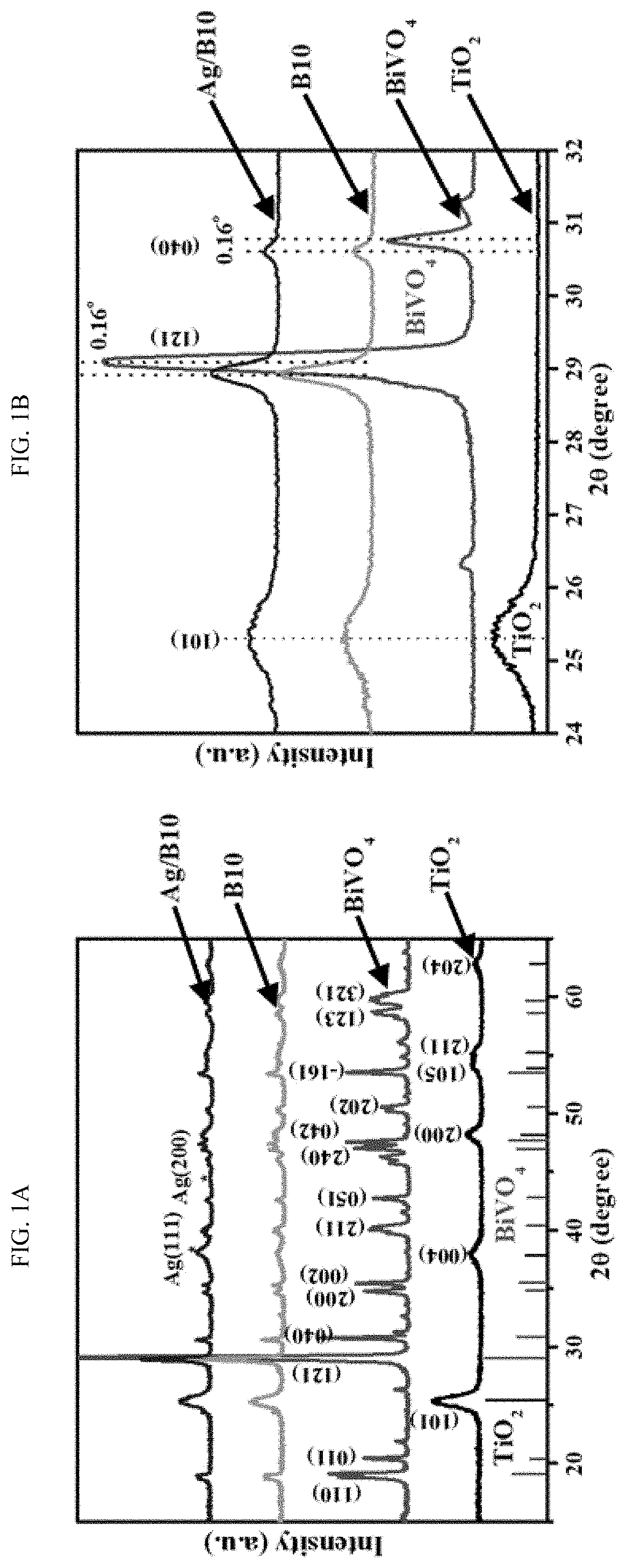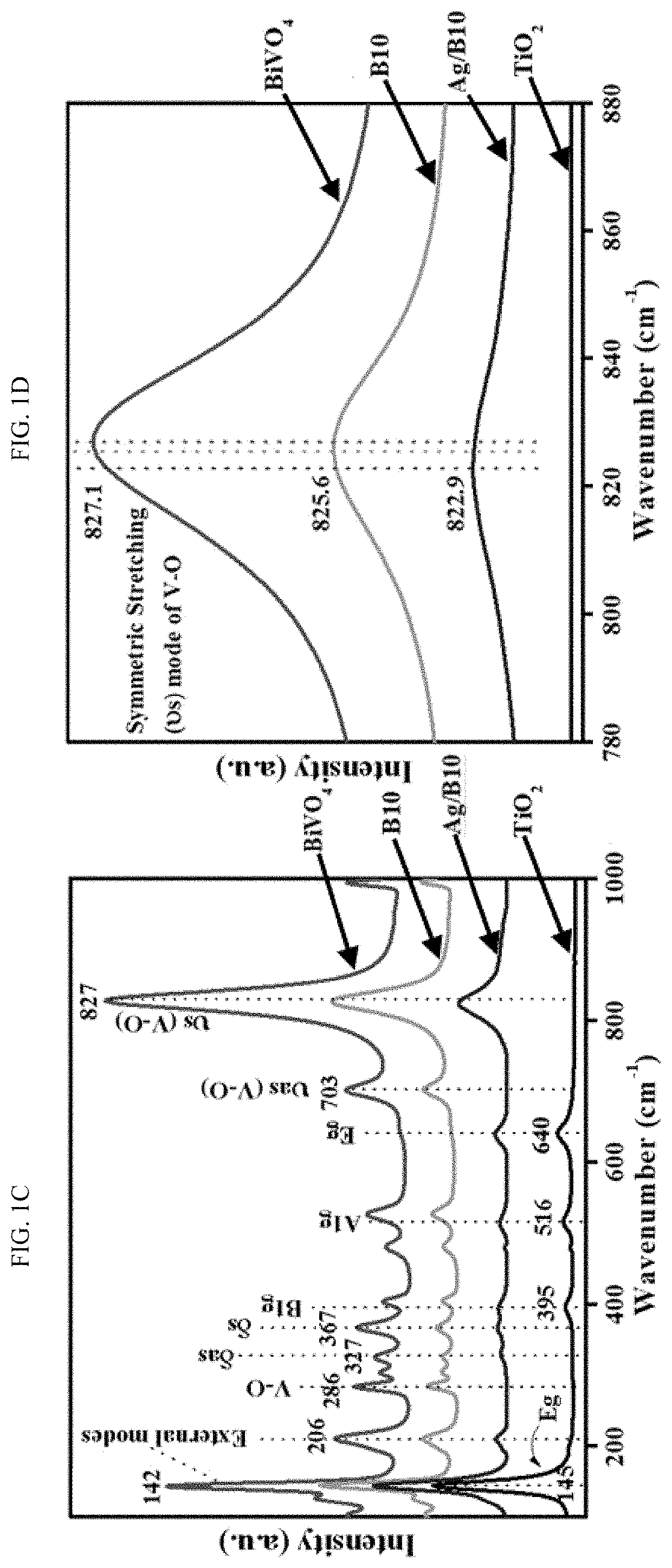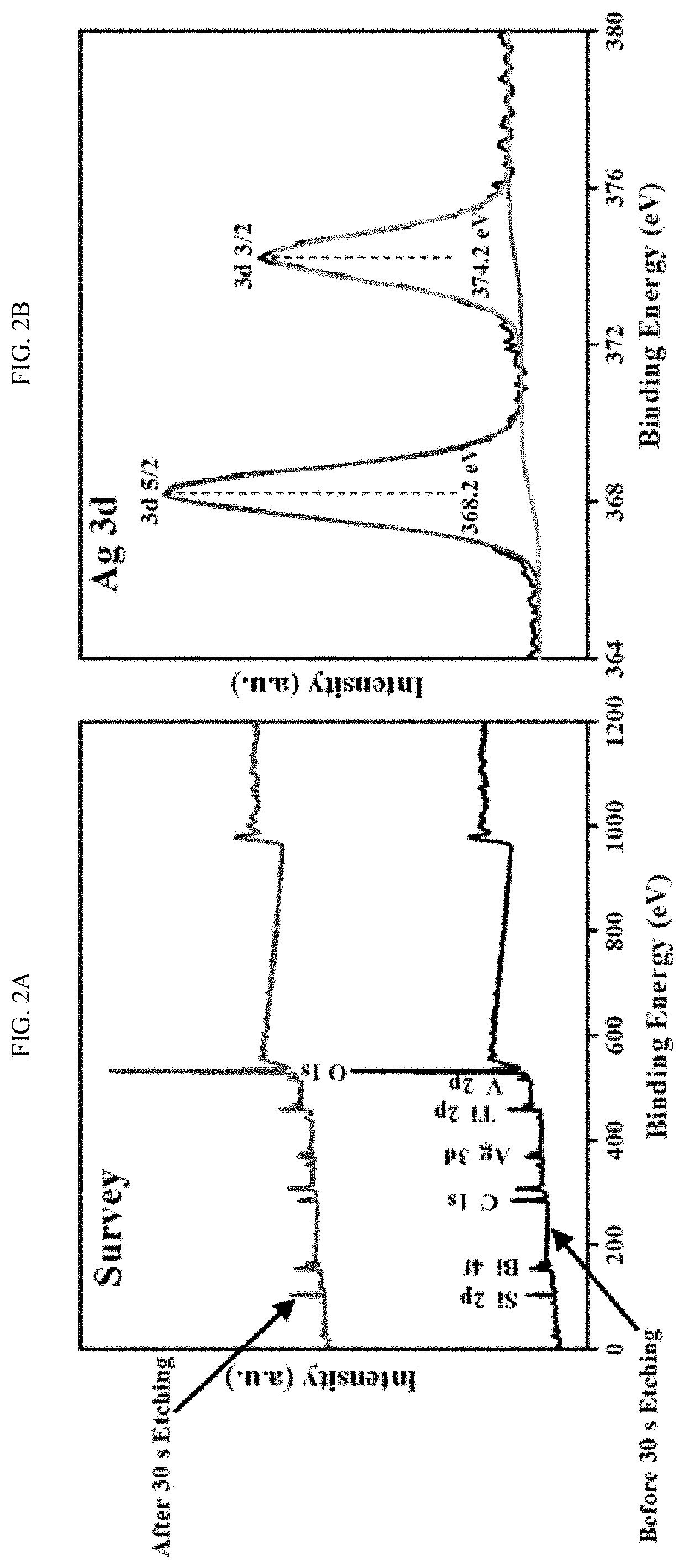EFFICIENT METHOD FOR PLASMON-AIDED SOLAR WATER-SPLITTING USING (BiVO4)X–(TiO2)1-X TERNARY NANOCOMPOSITES
- Summary
- Abstract
- Description
- Claims
- Application Information
AI Technical Summary
Benefits of technology
Problems solved by technology
Method used
Image
Examples
examples
[0086]Synthesis of TiO2 Nanoparticles. Highly crystalline TiO2 nanoparticles were prepared as follows: 45 mls of absolute ethanol (99.8%, Sigma-Aldrich) were taken in a polytetrafluoroethylene (PTFE) vessel and pH was adjusted to below 1.0 using concentrated nitric acid (70%, Aldrich). Then, 45 mmoles (15.786 g) of titanium (IV) butoxide (97%, Aldrich) were added to the ethanolic solution followed by dropwise addition of 90 mmoles of deionized (DI) water under constant stirring at ambient temperature. The titanium precursor remained clear in the solution and no hydrolysis reaction took place within 30 minutes of preparation.
[0087]The PTFE solution vessel was then placed in a stainless steel autoclave reactor (Parr, USA) and kept in a synthetic oven (280A, Fisher Scientific) at 180° C. for 24 hours.
[0088]After the completion of this reaction, the crystallized TiO2 nanoparticles were centrifuged, washed with absolute ethanol, and vacuum-dried at 80° C. for 8 hours.
[0089]The dried prod...
PUM
 Login to view more
Login to view more Abstract
Description
Claims
Application Information
 Login to view more
Login to view more - R&D Engineer
- R&D Manager
- IP Professional
- Industry Leading Data Capabilities
- Powerful AI technology
- Patent DNA Extraction
Browse by: Latest US Patents, China's latest patents, Technical Efficacy Thesaurus, Application Domain, Technology Topic.
© 2024 PatSnap. All rights reserved.Legal|Privacy policy|Modern Slavery Act Transparency Statement|Sitemap



